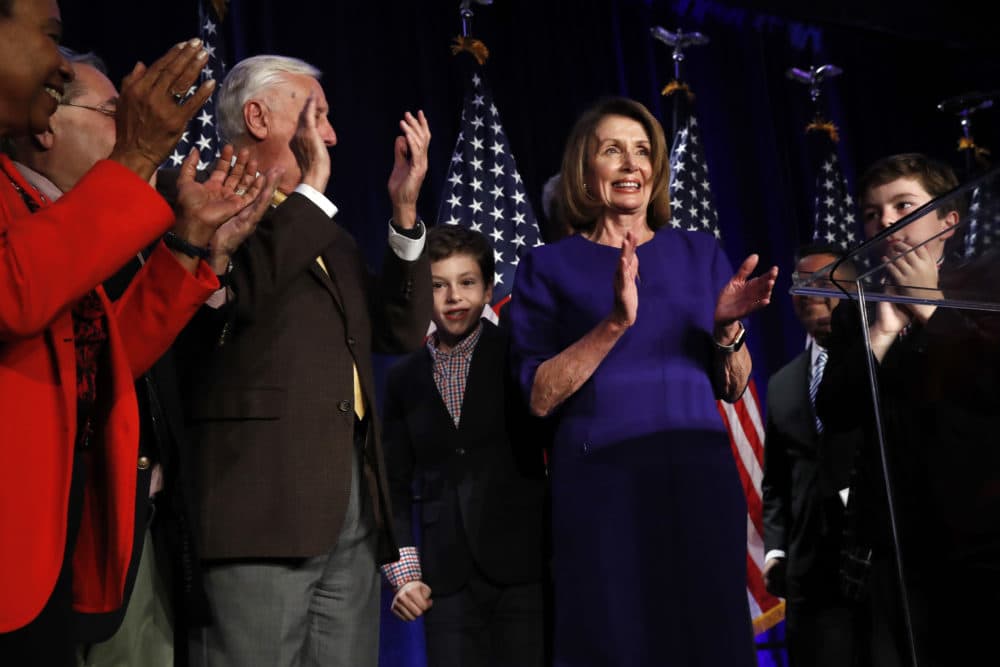Advertisement
Commentary
Welcome To Divided Government. Will Democrats Overplay Their Hand?

The blue wave hype didn’t materialize in the 2018 midterms, but Democrats did perform about average for flipping U.S. House seats on a president whose approval ratings remain below 50 percent to win control over the lower chamber of Congress. Republicans, for their part, took advantage of Democrats having to defend 26 U.S. Senate seats compared to the GOP’s nine, and increased their majority.
Welcome to divided government.
In the era of President Donald Trump, these results signal that the partisan rancor in Washington, already unprecedented in modern times, will only intensify over the next two years.
Democrats in control of the House will face a decision on January 3 about whether to prioritize a broad slate of investigations of the president and his administration, or to pursue a legislative and policy agenda to define their party to the American public heading into the 2020 presidential election.
Divided government arising during a first term isn’t a unique occurrence.
Presidents Barack Obama and Bill Clinton each had to deal with a House that suddenly turned unfriendly. It weighed down their respective administrations and made life miserable for their staffers, but didn’t adversely affect their re-elections. It’s even reasonable to argue that in both cases the political abuse those presidents suffered at the hands of the Congressional leaders may have helped them appear as sympathetic characters to the electorate and propel them to second terms.
This is the rub for the new Democratic majority in 2019.
Will it overplay its hand and turn off independents, while also providing Trump precisely what he needs to thrive in the run-up to 2020 — a well-defined enemy to motivate his base and unite Republicans in both chambers behind him? It’s a good bet that it will.
Will [a Democratic House] overplay its hand and turn off independents, while also providing Trump precisely what he needs to thrive in the run-up to 2020 ...
Potential new House committee chairs may have already painted themselves into a corner with their own base. Some have pushed the idea of impeachment to motivate voter turnout, and others have put forth the specter of multiple concurrent investigations of the Trump administration. It will be virtually impossible for House Democrats to walk this back.
And the gamut of topics for investigation continues to metastasize. It includes the emoluments clause, the president’s tax returns, the administration’s policy making regarding immigration, and foreign meddling in U.S. elections. And the new House majority can use unilateral subpoena power to obtain a wide range of documents, and hold an unending set of televised oversight hearings, to slow the Trump administration to a crawl and try to break its morale.
The rich array of issues and the robust tools at its disposal will prove too much of a temptation for the new House majority to eschew, and it will move forward with gusto in an aggressive oversight role.
The Trump administration’s apparent dysfunction, lack of organization and incomplete staffing, would seem to make it particularly vulnerable to congressional investigations. Yet, the president thrives politically when confronted with a clear opponent, and he’ll use the opportunity to make the new speaker – whether Nancy Pelosi or a compromise candidate – the embodiment of the enemy to motivate his base for 2020. That strategy may even work.
The GOP’s Senate victory, on the other hand, empowers Trump to continue reshaping the federal judiciary. This is one area where the administration has been prolific and effective during its first two years.
The GOP’s Senate victory, on the other hand, empowers Trump to continue reshaping the federal judiciary.
Trump has successfully appointed 84 federal judges, has 57 nominations awaiting advice and consent by the Senate, and could fill more than 130 judicial vacancies that currently exist. The Trump administration has leveraged well-connected Washington insiders to recommend conservative judges for appointment, and the Senate has moved swiftly through its advice and consent duties to confirm nominations. This process will not slow over the next two years.
The midterm outcome didn’t match the hyperbole of the build-up. It has, however, set the stage for a profound juxtaposition of presidential vulnerability and power.
In the next two years, the president will attempt to fend off investigations and oversight from the House, run a continual political campaign against the Democratic speaker and various committee chairs, and rush to leave a generational mark on the federal judiciary.
Myriad political crises will undoubtedly emerge — some rising to a constitutional level — all as a backdrop to the 2020 campaign that starts in earnest today.
